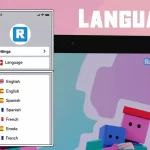Introduction to Play Google Minesweeper
Google Minesweeper is the computerized version of the decades-old classic puzzle game. Designed by Robert Donner and Curt Johnson in the 1960s, the game has come a long way since its earliest computer versions and is now just a straightforward search away on Google. This delightful challenge requires the player to deduce where the mines are located on a grid and use a bit of a guess to clear up a grid of hidden mines.
The simple idea of the game Google Minesweeper has remained steadfast: you must uncover all of the non-mine cells while trying to do so, not click on the mineshidden mines. Rules are simple but require good thinking, tactics, and observation to make the game enjoyable. One of the most exciting features that make playing Google Minesweeper fun is its convenience and depth, making it a short, satisfying, and engaging game.
Though it may seem very basic, Google Minesweeper is a game that has grown in popularity and has attracted the attention of both casual and professional puzzlers. You can play it in almost any browser using basic controls, making it ideal for short breaks or longer periods of strategic planning. This ease of use has enabled the game to become part of the online gaming community for several decades.
The last game of this post will focus on sweeping. So, if you want to know everything about the game, including strategies that will come in handy, you will get to know everything at the end of this post. With new confidence and strategy, you’ll now be able to clear the digital corners of the mines without fear.
Getting Started with Google Minesweeper
Google Minesweeper, a much more advanced version of Minesweeper, is available to users completely for free. The first one on the screen should be the playable widget coming from the connector. Alternatively, the game is available as a mobile app through the Apple App Store and Google Play Store.
After opening Google Minesweeper, the game immediately reveals its exciting interface. Depending on their skill and preference, the new players will have the option to choose the Manoeuvres as per the difficulty of Selecting “Beginner,” Intermediate,” or “Expert.” Each level comes with a variation of grid size and quantity of mines, thus ensuring that the player will stay energized as time advances.
Touted as one of the simplest yet exciting games, Minesweeper is a classic. In a conventional minesweeper game, you see a grid of covered squares representing the field. Minesweeper is about clearing the grid without touching any mines. Right-clicking on a PC or long-pressing on mobile devices also helps. Moreover, the grid poses the challenge of guessing where the concealed explosives may be, but it also shows numbers to allow the player to know how many mines are around that square.
To better Play Google Minesweeper, it is essential to be acquainted with the above-mentioned elements. Firstly, flags, which provide strong cues about where a mine is, aid in preventing haphazard clicks from leading to the end of the match. It is important to know that each number revealed after uncovering safe squares is key to ensuring that a player doesn’t blow up a mine while solving the puzzle.
When players understand this information, they are able to catwalk through the rough paths that the game has, which allows them to better strategize their moves and have a more enjoyable experience while playing the Google Minesweeper game.
Basic Rules and Tips for Playing Google Minesweeper
If you want to get a satisfying experience playing Google Minesweeper, it is essential to know the most basic rules of Google Minesweeper. The aim is to unveil all non-mine squares while avoiding revealing any part of the board that has mines. As is the case with every board game, it involves a square grid where some squares have empty spaces while some have concealed mines. When a player clicks on a square, the game either displays numbers indicating the mines in the surrounding eight squares or shows a blank square, meaning no mines are present nearby.
Utilizing the numbers
Utilizing these numbers to guess where the nearby undisclosed mines might be is one of the most essential Google Minesweeper tips. For example, if a square is marked as 2, there are two more squares, with eight squares placed on the adjoining sides. Instead of risking themselves accidentally revealing a mine, the players can use the flag icon to mark spaces they think hold mines.
If you need more experience to play the game, we recommend starting from the corners since the numerals are typically quick to appear. It is also very important to concentrate on the numbers you have already revealed because those numbers, along with other visible squares, denote the logical order of the game to expose other squares safely. It would be easier to consider certain arrangements like three, such as ‘1-2-1’ or ‘1-1-1’, which will allow you to mark where you think the explosions have occurred with pinpoint precision.
safe squares
Another important recommendation is proper and fast clearing of ‘safe’ squares on the board. In Minesweeper, time and precision are interrelated aspects of the game, especially in timed modes. For instance, clearing a large block of squares at the beginning of the game can provide great insight into the game board, thus simplifying the choice of the following moves. Another good habit is always remembering the number of mini objects on the board and the number of triangled pyramids you flagged as potential dangers.
These rules and strategies enhance the game and make the entire experience of playing Google Minesweeper much fun. Most importantly, adherence to these rule-saving techniques and guidelines will assist the players in gaining a better grasp of the elements comprising the classic puzzle game.
| Feature | Description |
|---|---|
| Objective | Clear the board without triggering mines. |
| Gameplay Mechanics | Click squares to reveal numbers or blanks. |
| Numbers Indicate | Mines in the adjacent squares. |
| Flagging Mines | Right-click to mark suspected mines. |
| Winning Condition | Clear all safe squares and flag all mines. |
Advanced Strategies and Techniques for Mastering Google Minesweeper
Through the fundamental developments of Google Minesweeper, one should enlist advanced strategies and sophisticated techniques. As it was mentioned before, more than mastering this game is required. One crucial aspect to incorporate into your arsenal is chord-clicking. This technique has increased efficiency and effectiveness in addition to providing faster-paced gameplay. Once the number of mines around a number on the grid has been flagged out, a chord click instantaneously allows a player to click all onee on the grid around the number.
pattern recognition
A huge part of performing well in Google Minesweeper is pattern recognition. Expert players often memorize common patterns that appear when playing, making decision-making easier and quicker. For example, the 1-2-1 and 1-2-2-1 patterns are common ones that help decide whether it is worth flagging the neighboring cells or clicking them.
probabilistic guessing:
A more developed approach is probabilistic guessing: players determine how likely mines might be. This comes in handy when you want to analyze the probabilities instead of just making a random move but sense that there is a vague, safe option. Although this doesn’t always work, it improves your chances of making the right decision under stress.
It is always a good idea to think of the averages of pros when it comes to moving optimization, which is usually speed and accuracy. And is paramount to be able to scan the grid effectively. It is important to practice these skills regularly, as they will improve the more complex grid scans, making them faster. Also, improving concentration and emotional stability will prevent a number of mistakes and improve performance.
For Google Minesweeper to perform well, the player must constantly work on it. Every match has some gameplay components that can help polish these advanced strategies. Applying approaches such as chord clicking, fathoming patterns, and making educated guesses will improve your skills, and getting into a habit of practicing a lot results in getting better at solving problems, which, in turn, makes you faster and even more precise when playing the game.





